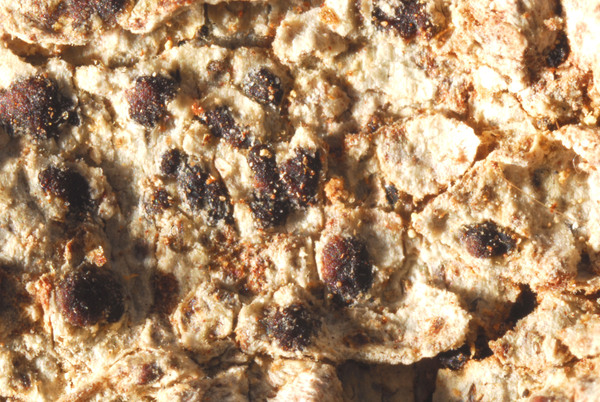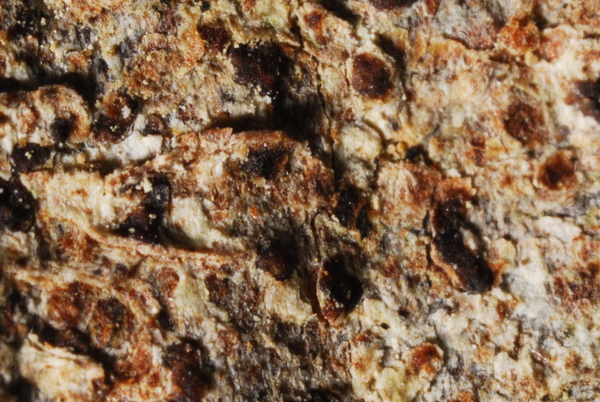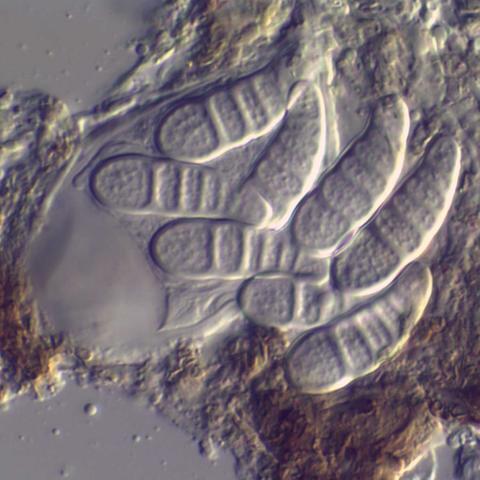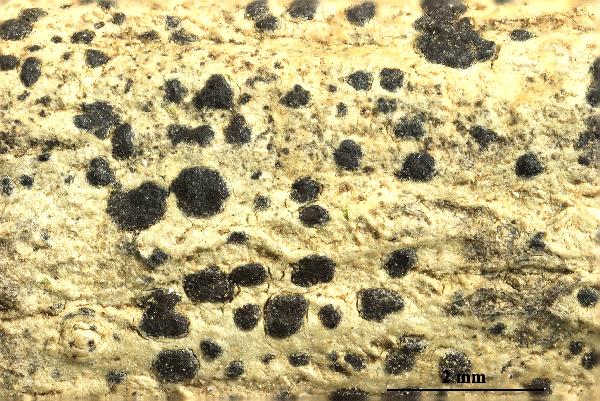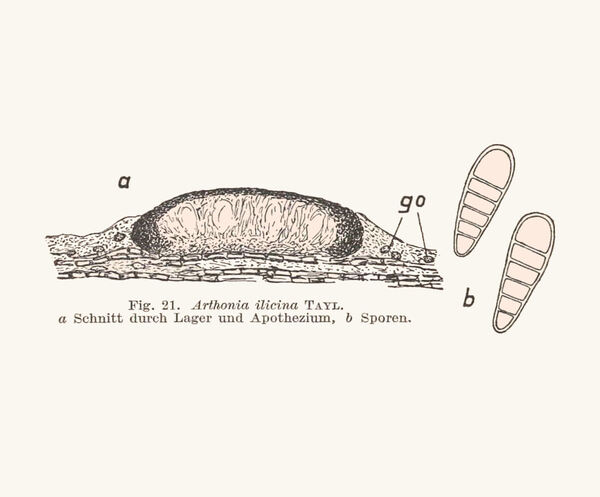Arthonia ilicina Taylor
Fl. Hibern., 2: 105, 1836.
Synonyms: Arthothelium ilicinum (Taylor) P. James
Distribution: S - Pugl (Durini & Medagli 2002), Cal (Puntillo 1996).
Description: Thallus crustose, endosubstratic, white to cream-coloured, effuse or delimited by a brown prothalline line. Apothecia arthonioid, immersed to broadly erumpent through uppermost bark layers, scattered, rounded and 0.2-1 mm across, more rarely elongate and c. 0.2-0.6 x 2 mm, 90-130 µm tall, flat and level with thallus or convex and slightly raised, dark red-brown or brown-black, epruinose, without a distinct proper margin. Proper exciple poorly developed; epithecium reddish brown, of mainly anticlinally arranged, brown-walled, branched hyphae, 20-25 µm high, K+ pale olive-green, often covered with a 10-20 µm high, hyaline, gelatinous layer; hymenium colourless to yellowish brown, 60-85 µm high, K+ pale green, I+ blue turning wine-red in upper part, K/I+ blue, later turning red in epihymenial parts, K/I+ blue; paraphysoids scarce, anastomosing, branched in upper part, c. 1 µm thick, the apical cells 1.5-2 µm wide; hypothecium colourless to yellowish brown, 10-30 µm high. Asci 8-spored, broadly clavate, semi-fissitunicate, with a large apical dome, and a distinct ocular chamber, the apex with a K/I+ blue, elongated ring structure and paler bluish tholus flanks, Arthothelium-type, 55-70 x 24-30 µm. Ascospores 5-6(-7)-septate, constricted only at the uppermost septum, hyaline but often turning brown and faintly verruculose when overmature, clavate-obovoid, with one of the terminal cells enlarged, straight to slightly curved, 25-36(-40) x 9-14 µm. Pycnidia rare, brownish, 60-80 µm across, the wall K+ pale green. Conidia bacilliform, 7-9.5 x c. 1 µm. Photobiont trentepohlioid. Spot tests: thallus K-, C-, KC-, P-, UV-. Chemistry: without lichen substances. Note: a Mediterranean-Atlantic species of humid montane woodlands, known from a few localities in Southern Italy. It is included in the Italian red list of epiphytic lichens as “Endangered” (Nascimbene & al. 2013c).
Growth form: Crustose
Substrata: bark
Photobiont: Trentepohlia
Reproductive strategy: mainly sexual
Most common in areas with a humid-warm climate (e.g. most of Tyrrenian Italy)
Commonnes-rarity: (info)
Alpine belt: absent
Subalpine belt: absent
Oromediterranean belt: absent
Montane belt: extremely rare
Submediterranean belt: absent
Padanian area: absent
Humid submediterranean belt: absent
Humid mediterranean belt: absent
Dry mediterranean belt: absent

Predictive model
Herbarium samples
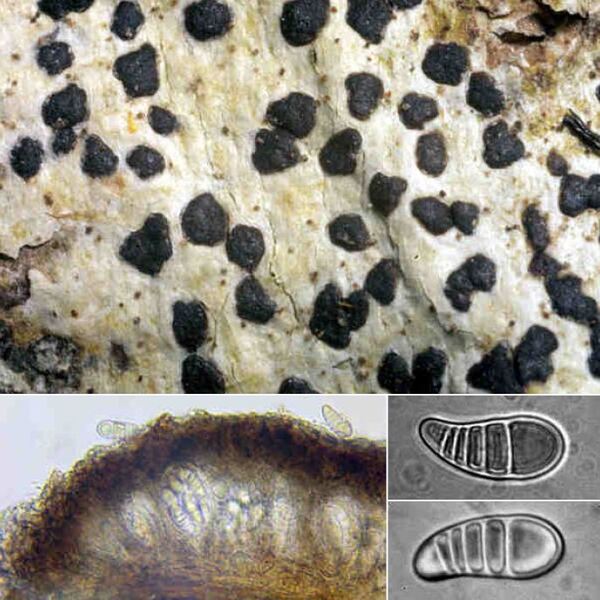

Felix Schumm – CC BY-SA 4.0
Image from: F. Schumm (2008) - Flechten Madeiras, der Kanaren und Azoren. Beck, OHG - ISBN: 978-3-00-023700-3


P.L. Nimis; Owner: Department of Life Sciences, University of Trieste
Herbarium: TSB (10644)
2001/11/21
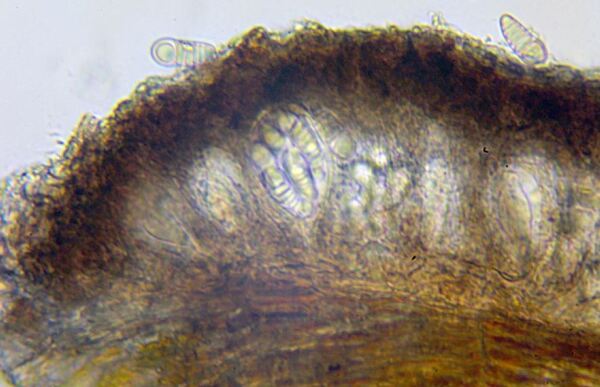

Felix Schumm - CC BY-SA 4.0
Image from: F. Schumm (2008) - Flechten Madeiras, der Kanaren und Azoren. Beck, OHG - ISBN: 978-3-00-023700-3
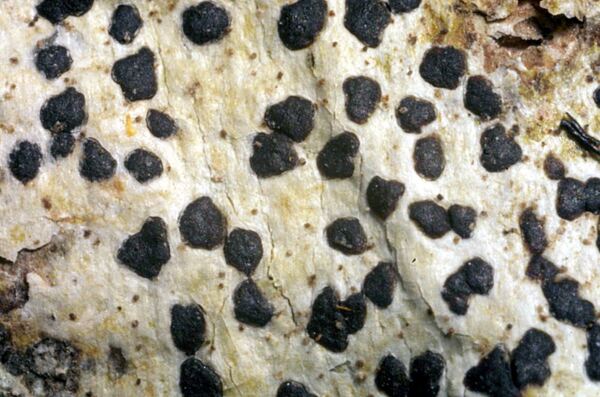

Felix Schumm - CC BY-SA 4.0
Image from: F. Schumm (2008) - Flechten Madeiras, der Kanaren und Azoren. Beck, OHG - ISBN: 978-3-00-023700-3
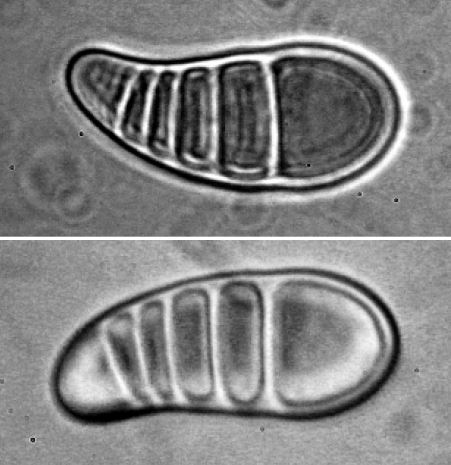

Felix Schumm - CC BY-SA 4.0
Image from: F. Schumm (2008) - Flechten Madeiras, der Kanaren und Azoren. Beck, OHG - ISBN: 978-3-00-023700-3

Alain Gerault - Source: http://www.lichensmaritimes.org/index.php?task=fiche&lichen=474&lang=en
France, Landévennec

Alain Gerault - Source: http://www.lichensmaritimes.org/index.php?task=fiche&lichen=474&lang=en
France, Landévennec
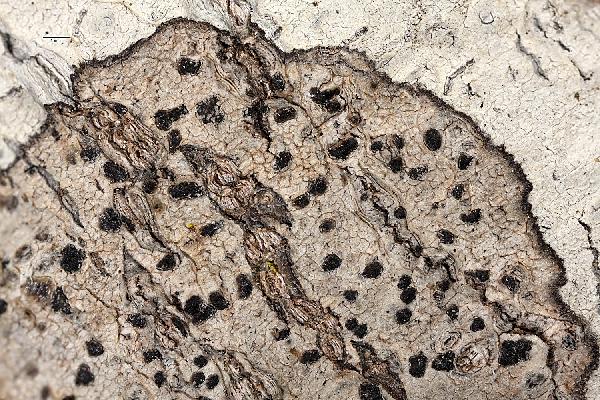
Ulrich Kirschbaum CC BY-SA 4.0 - Source: https://www.thm.de/lse/ulrich-kirschbaum/flechtenbilder
Portugal; Central Madeira: near Queimadas.
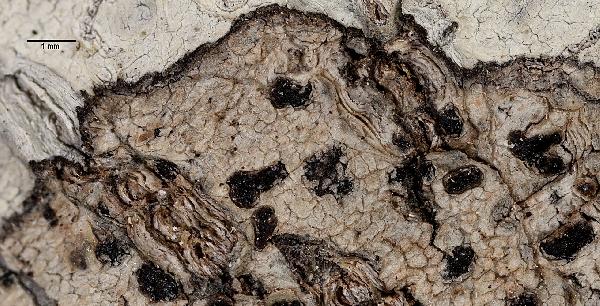
Ulrich Kirschbaum CC BY-SA 4.0 - Source: https://www.thm.de/lse/ulrich-kirschbaum/flechtenbilder
Portugal; Central Madeira: near Queimadas.
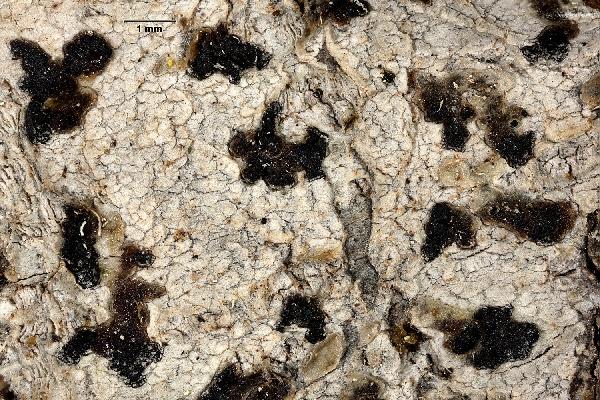
Ulrich Kirschbaum CC BY-SA 4.0 - Source: https://www.thm.de/lse/ulrich-kirschbaum/flechtenbilder
Portugal; Central Madeira: near Queimadas.
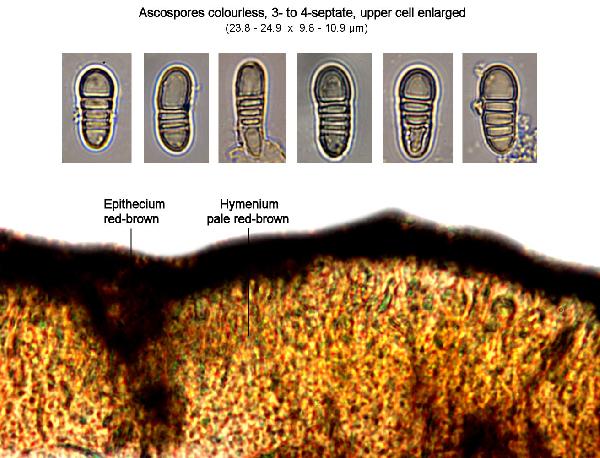
Ulrich Kirschbaum CC BY-SA 4.0 - Source: https://www.thm.de/lse/ulrich-kirschbaum/flechtenbilder
Portugal; Central Madeira: near Queimadas.
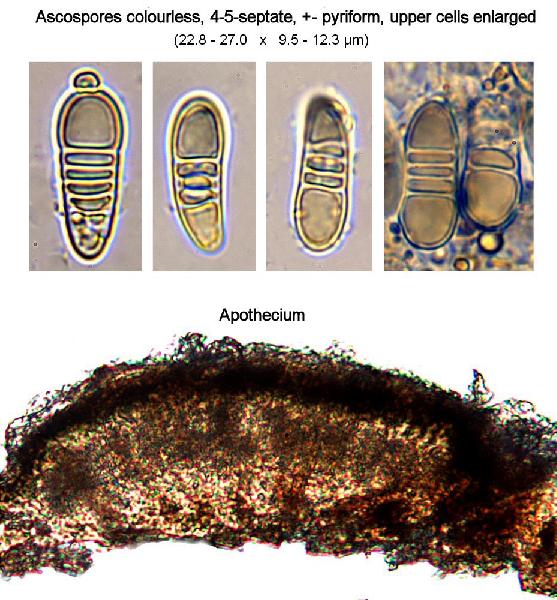
Ulrich Kirschbaum CC BY-SA 4.0 - Source: https://www.thm.de/lse/ulrich-kirschbaum/flechtenbilder
Portugal; Central Madeira: near Queimadas.
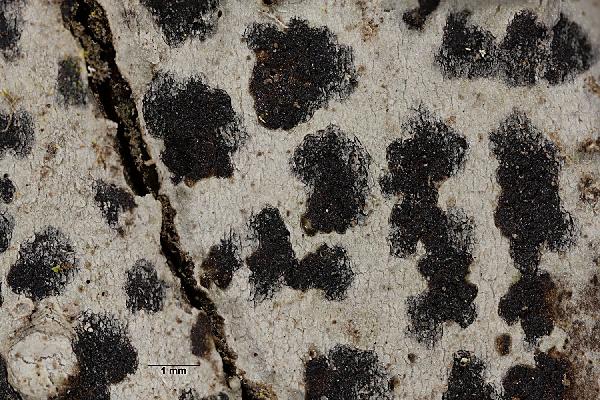
Ulrich Kirschbaum CC BY-SA 4.0 - Source: https://www.thm.de/lse/ulrich-kirschbaum/flechtenbilder
On smooth bark of Castanea sativa.
Portugal; NW-Madeira; NE of Achadas da Cruz: Portas da Vila.
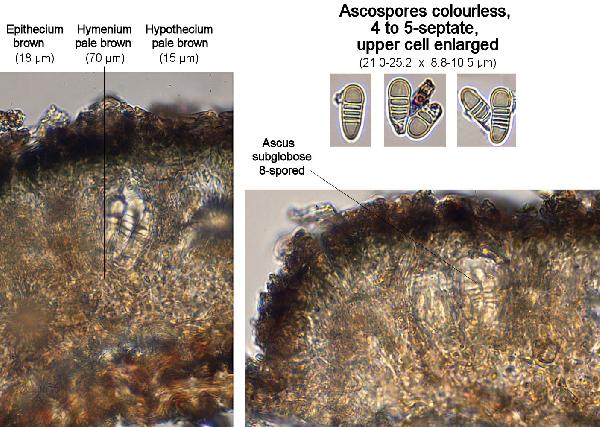
Ulrich Kirschbaum CC BY-SA 4.0 - Source: https://www.thm.de/lse/ulrich-kirschbaum/flechtenbilder
On smooth bark of Castanea sativa.
Portugal; NW-Madeira; NE of Achadas da Cruz: Portas da Vila.
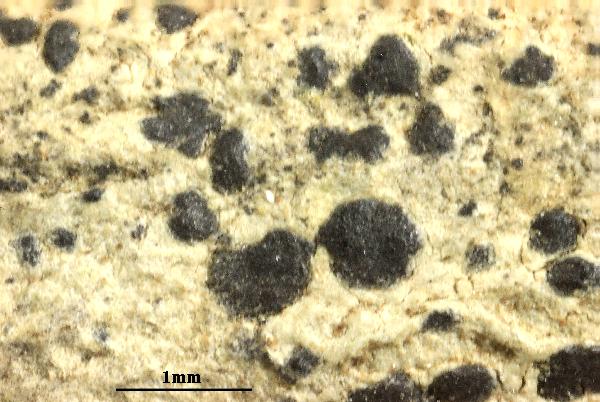

Felix Schumm - CC BY-SA 4.0
[VZR162], Italia. Calabria. Vibo Valentia, prope Angitola lacum, 50 m.
Ad corticem arborum (Olea europaea). Leg. & comm. D. Puntillo. EX
A. VEZDA: LICHENES RARIORES EXSICCATI NR. 162.
Growth form: Crustose
Substrata: bark
Photobiont: Trentepohlia
Reproductive strategy: mainly sexual
Most common in areas with a humid-warm climate (e.g. most of Tyrrenian Italy)
Commonnes-rarity: (info)
Alpine belt: absent
Subalpine belt: absent
Oromediterranean belt: absent
Montane belt: extremely rare
Submediterranean belt: absent
Padanian area: absent
Humid submediterranean belt: absent
Humid mediterranean belt: absent
Dry mediterranean belt: absent

Predictive model
| Herbarium samples |


Felix Schumm – CC BY-SA 4.0
Image from: F. Schumm (2008) - Flechten Madeiras, der Kanaren und Azoren. Beck, OHG - ISBN: 978-3-00-023700-3


P.L. Nimis; Owner: Department of Life Sciences, University of Trieste
Herbarium: TSB (10644)
2001/11/21


Felix Schumm - CC BY-SA 4.0
Image from: F. Schumm (2008) - Flechten Madeiras, der Kanaren und Azoren. Beck, OHG - ISBN: 978-3-00-023700-3


Felix Schumm - CC BY-SA 4.0
Image from: F. Schumm (2008) - Flechten Madeiras, der Kanaren und Azoren. Beck, OHG - ISBN: 978-3-00-023700-3


Felix Schumm - CC BY-SA 4.0
Image from: F. Schumm (2008) - Flechten Madeiras, der Kanaren und Azoren. Beck, OHG - ISBN: 978-3-00-023700-3

Alain Gerault - Source: http://www.lichensmaritimes.org/index.php?task=fiche&lichen=474&lang=en
France, Landévennec

Alain Gerault - Source: http://www.lichensmaritimes.org/index.php?task=fiche&lichen=474&lang=en
France, Landévennec

Ulrich Kirschbaum CC BY-SA 4.0 - Source: https://www.thm.de/lse/ulrich-kirschbaum/flechtenbilder
Portugal; Central Madeira: near Queimadas.

Ulrich Kirschbaum CC BY-SA 4.0 - Source: https://www.thm.de/lse/ulrich-kirschbaum/flechtenbilder
Portugal; Central Madeira: near Queimadas.

Ulrich Kirschbaum CC BY-SA 4.0 - Source: https://www.thm.de/lse/ulrich-kirschbaum/flechtenbilder
Portugal; Central Madeira: near Queimadas.

Ulrich Kirschbaum CC BY-SA 4.0 - Source: https://www.thm.de/lse/ulrich-kirschbaum/flechtenbilder
Portugal; Central Madeira: near Queimadas.

Ulrich Kirschbaum CC BY-SA 4.0 - Source: https://www.thm.de/lse/ulrich-kirschbaum/flechtenbilder
Portugal; Central Madeira: near Queimadas.

Ulrich Kirschbaum CC BY-SA 4.0 - Source: https://www.thm.de/lse/ulrich-kirschbaum/flechtenbilder
On smooth bark of Castanea sativa. Portugal; NW-Madeira; NE of Achadas da Cruz: Portas da Vila.

Ulrich Kirschbaum CC BY-SA 4.0 - Source: https://www.thm.de/lse/ulrich-kirschbaum/flechtenbilder
On smooth bark of Castanea sativa. Portugal; NW-Madeira; NE of Achadas da Cruz: Portas da Vila.


 INDEX FUNGORUM
INDEX FUNGORUM
 GBIF
GBIF
